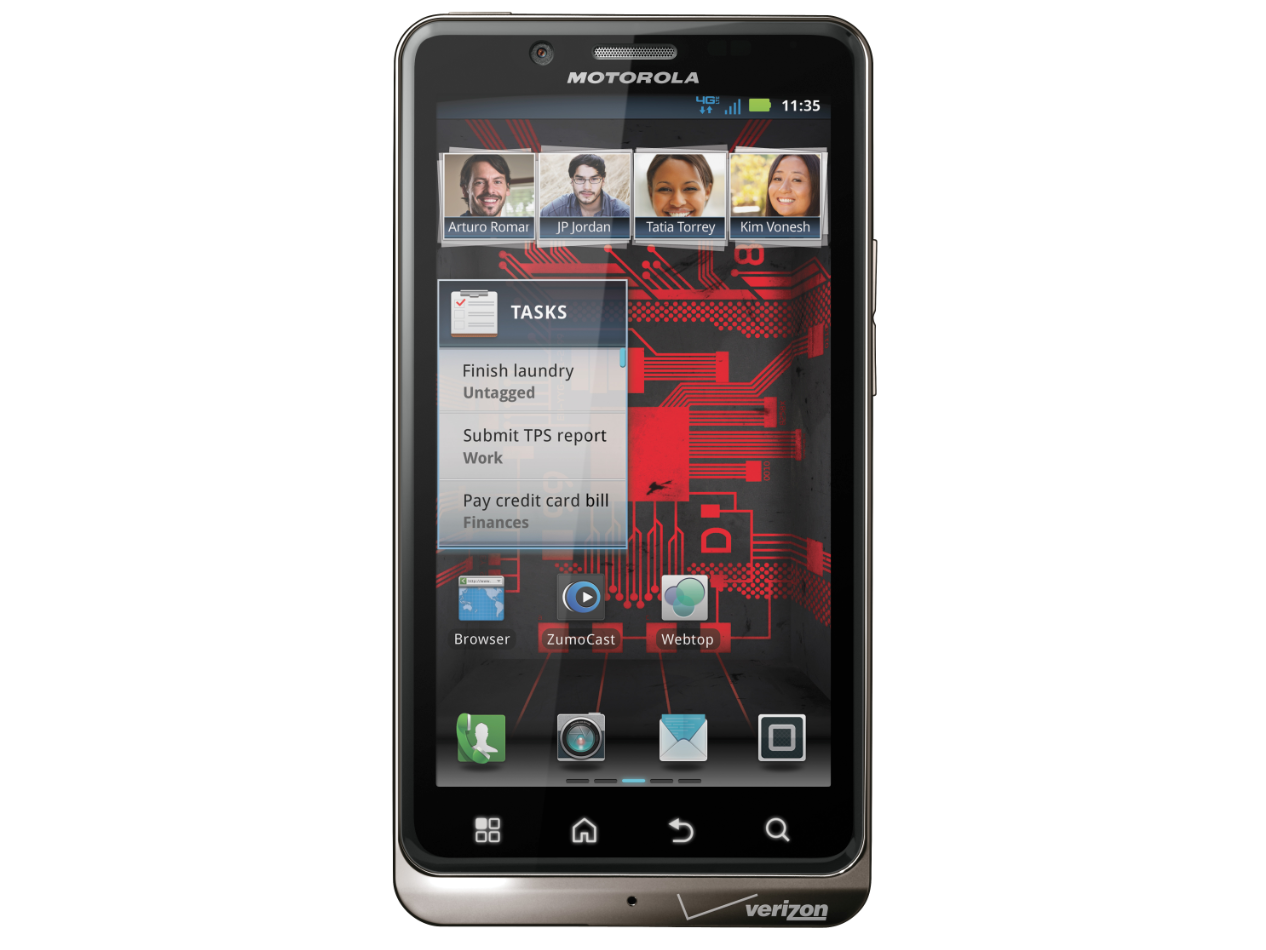Why you can trust TechRadar
The Droid Bionic comes equipped with Android Gingerbread, running 2.3.4 when fully updated. It's a shame that this speedy dual-core phone – complete with 4G LTE connectivity – lacks the latest and greatest version of the OS, but Motorola has yet to specify a launch date for Ice Cream Sandwich.
As such, you'll have to deal with the next-best Android handset option for now, or consider something like the Samsung Galaxy Nexus instead.
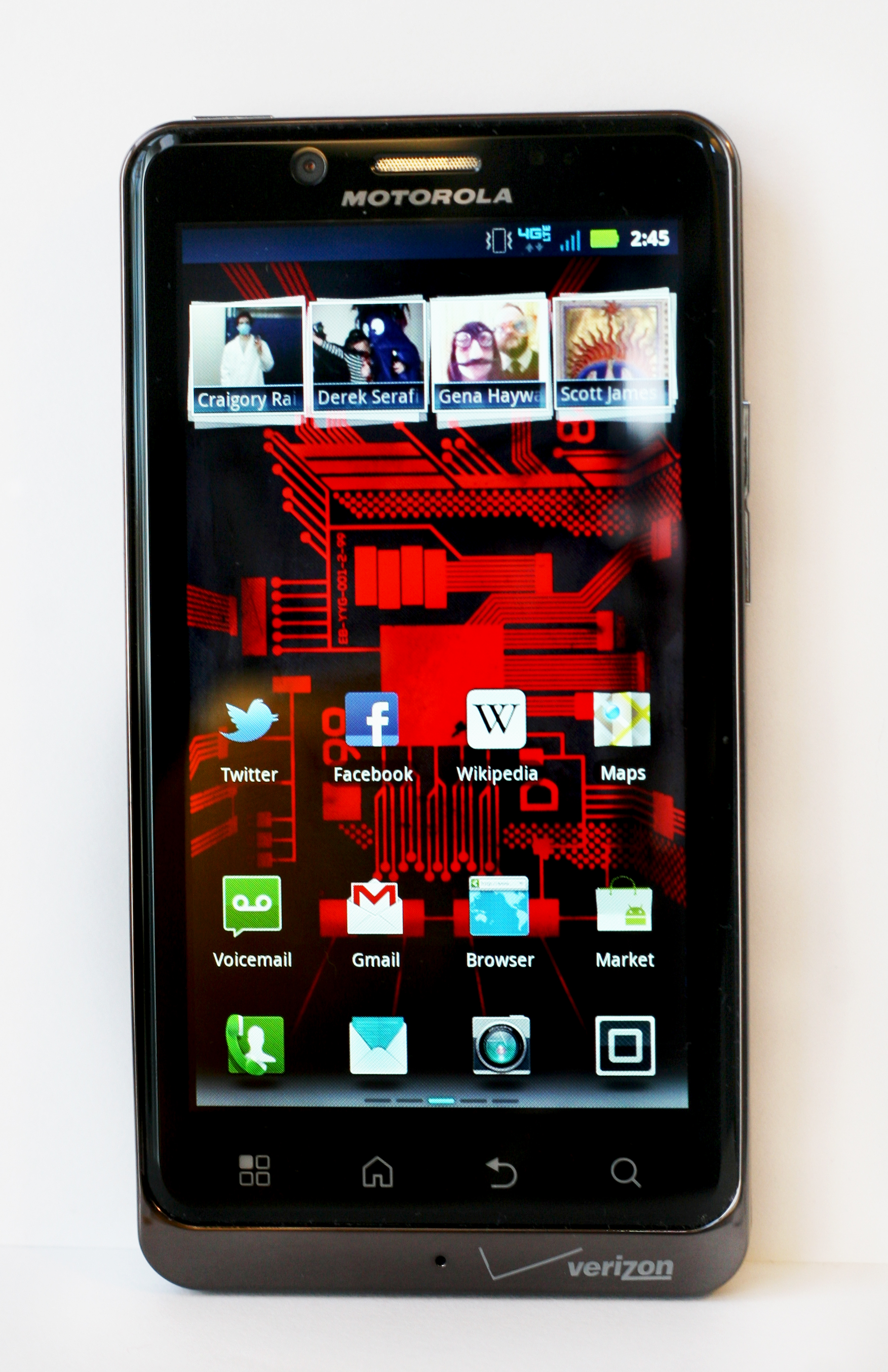
Luckily, the Droid Bionic puts its dual-core muscle to good use in this skinned take on Gingerbread, with speedy movement through the home screens, smooth animations at most turns, and quick loading of apps throughout.
We hit a couple snags with scrolling on the web browser and the Twitter app, though, where the screen simply didn't scroll with the kind of fluidity we'd expect considering the rest of the UI experience.
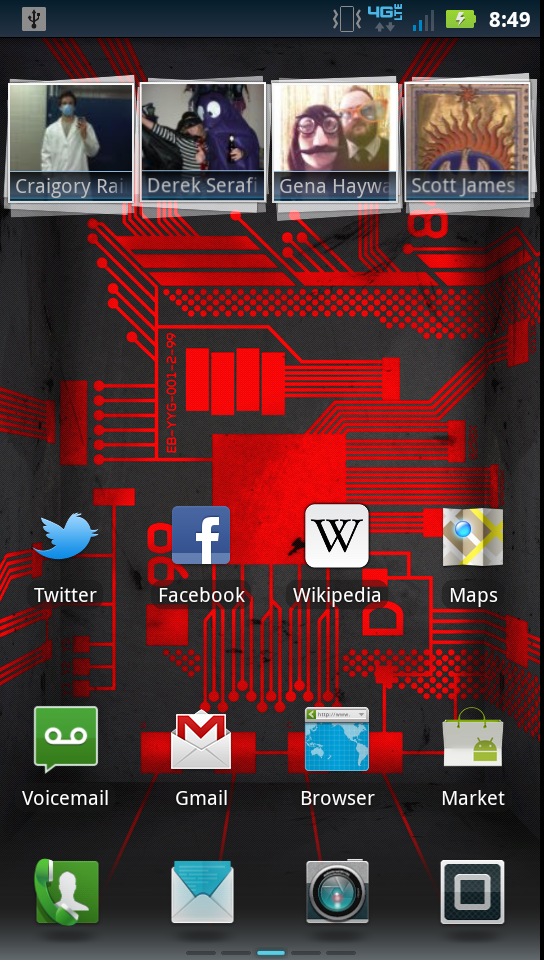
Just five home screens are available on the phone, which is a bit of a drag considering the numerous widgets you'll want to fill the pages with.
Left and right swipes take you through the home screens, or you can tap the home touch button below the display to see every home screen at once.
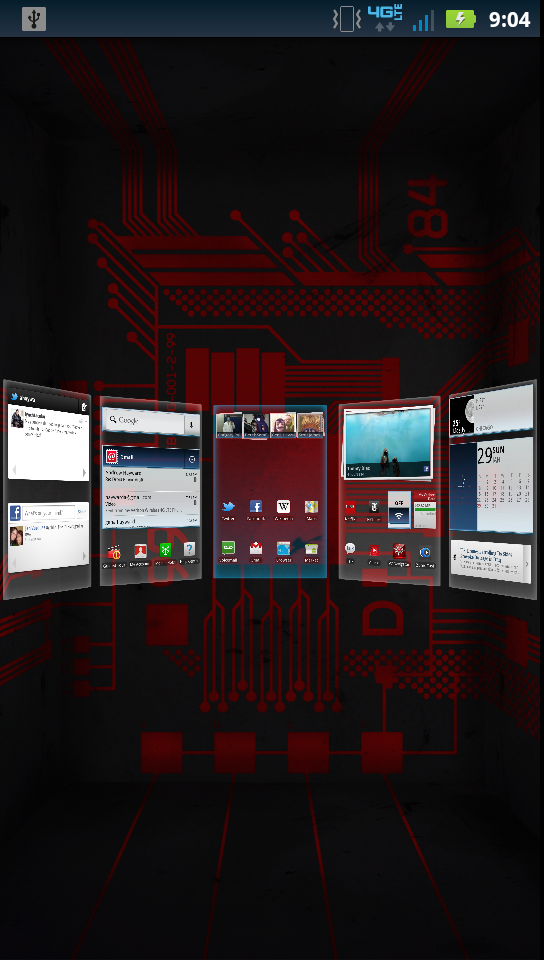
Between the calendar, Twitter, Facebook, e-mail, and favorite contacts – along with a selection of our most-used apps – we quickly ran out of screen real estate for everything we wanted handy on the fly.
Luckily, you can customize the footprint of some widgets via scalers on the corners, but many lack usefulness without sizeable space.
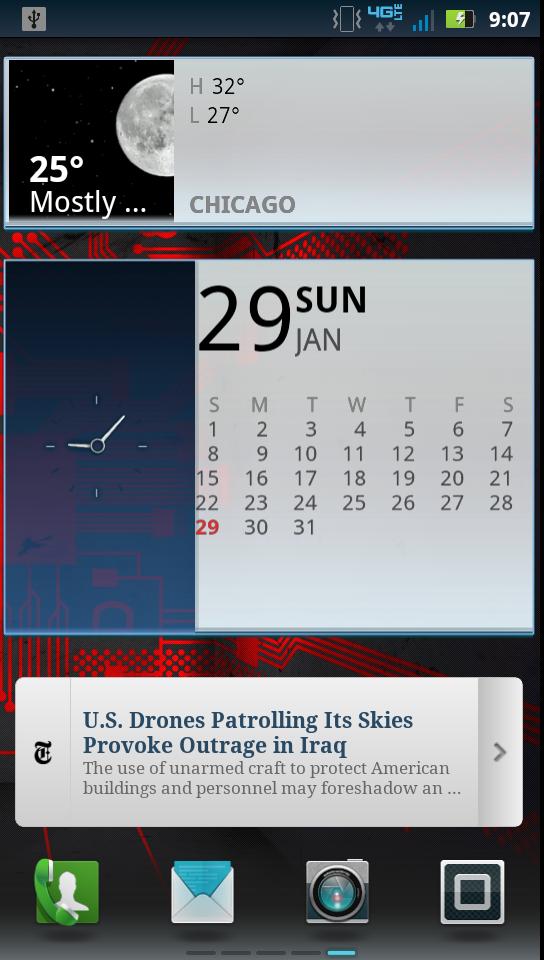
A dock at the bottom of each home screen includes access to calls/contacts, messaging, the camera, and a full list of apps, though you can swap in different apps by holding down on any app already found in the dock.
The touch buttons at the base of the screen let you view options, return to the home screen, flip back one screen, and access Google search respectively.
Plus, the phone ships with a handful of vibrant backdrops that span all five home screens and sharply demonstrate the bright display.
